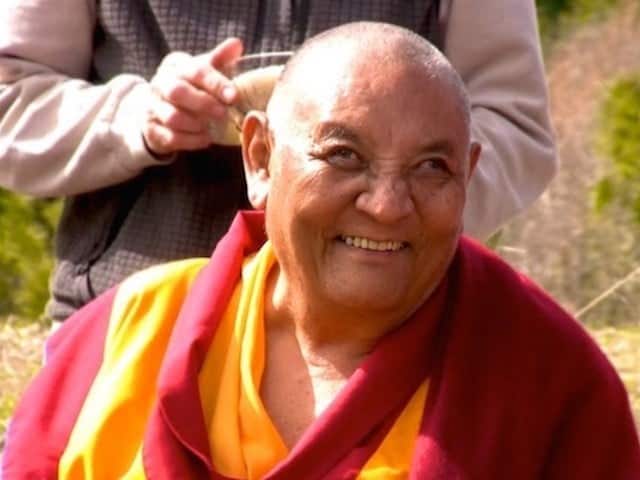The 12 links of dependent arising
From December 17 to 25, 2006, at Sravasti Abbey, Geshe Jampa Tegchok taught on A Precious Garland of Advice to a King by Nagarjuna. Venerable Thubten Chodron complemented these teachings by giving commentary and background.
Review
- The “aspect I” and “referent I” and how they appear to the wisdom realizing emptiness directly and to ordinary beings
- The analogy of a reflection in a mirror
- False appearance and how it does not harm appearance or function
- Conventional existence
- Another meditation on emptiness of the person
- The continuum of a person
- A specific “I” for each lifetime
- A general “I” over many lifetimes that are related through karma
- Brief overview of the 12 links of dependent arising
- Looking at the 12 links over several lifetimes
Verse 37
- How to cut the 12 links
- Best places to cut are at feeling and craving or at death
- Stopping the craving and grasping
- Seeing all as emptiness
- Refuting inherent existence—other texts that are referred to are
- The Diamond Slivers
- The Fundamental Wisdom by Nagarjuna
- The production of things
- From self
- From inherently existent others
- From a combination of self and others
- Or without causes (nihilists) there’s no inherent production from any of these
- Questions and answers
- Is the person who is a collection of aggregates a conventional existence?
- About rebirth, there are different Buddhist traditions: in Theravadan Buddhism, you are trying for liberation for yourself—but aren’t you also caring for the person in the next life of your mind continuum?
- To ordinary beings, we see and fear danger—is that from the “I” being in danger?
- The self-grasping “I” is to be negated in emptiness meditation, how does that relate to the “I” in tonglen meditation?
- What is the moment of consciousness when the seed ripens?
Precious Garland 08 (download)
Venerable Thubten Chodron
Venerable Chodron emphasizes the practical application of Buddha’s teachings in our daily lives and is especially skilled at explaining them in ways easily understood and practiced by Westerners. She is well known for her warm, humorous, and lucid teachings. She was ordained as a Buddhist nun in 1977 by Kyabje Ling Rinpoche in Dharamsala, India, and in 1986 she received bhikshuni (full) ordination in Taiwan. Read her full bio.

